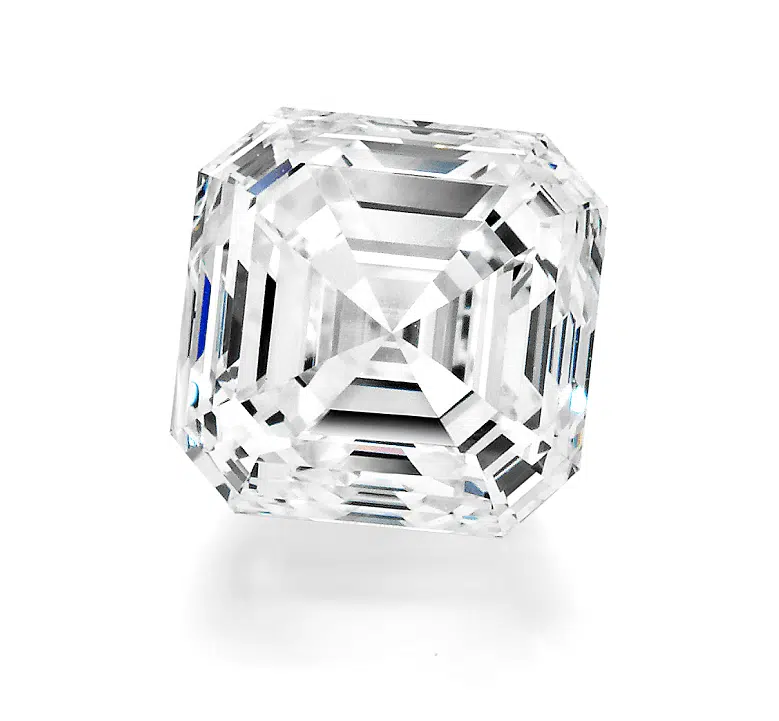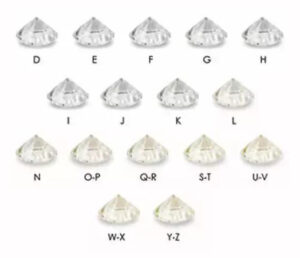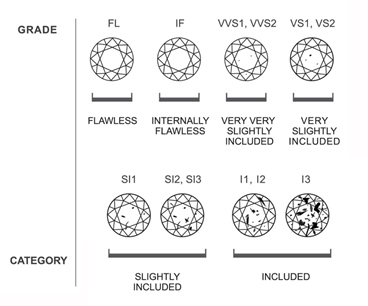Your Guide To Buying A Diamond
When selecting the perfect diamond there are four different elements to consider; cut, colour, clarity and carat. These elements all add up to the end value and beauty of the diamond, so it’s important you understand what it is your looking for.
Cut
The cut of a diamond has the greatest influence on its sparkle, this aspect is crucial to the diamonds appearance, it affects the way the diamond’s surface interacts with and catches light and determines its overall brilliance. If it’s cut too shallow the light leaks out of the bottom and if it’s too deep, it can escape out from the sides. Diamonds cut to a poor standard may appear dull because the majority of the light is easily lost due to it not being able to refract.
 |
Brilliant Round CutThe most popular style of cut is simply elegant and timeless and has the ability to suit virtually any setting and ring style. |
 |
Princess CutThis cut is very versatile, offering a more modern twist to the typical engagement ring. The four sharp corners disperse light more than other cuts, giving a more contemporary look. |
 |
Oval CutThis cut has become increasingly popular and one of its benefits is the optimisation of the carat weight, with a drawn elongated shape it can appear bigger than other shapes of the same carat weight. |
 |
Pear CutThis diamond is attractively symmetrical, with a tapered pint that elongates the stone. |
 |
Cushion CutThis cut has soft corners making it a great alternative if you like the best of both worlds in regards to the round and princess cut. |
 |
Emerald CutAn emerald cut create a distinctive and elegant look, the stylish cut is precise and sharp. |
 |
Heart CutA heart shaped diamond is a complex diamond structure, making it more rare than other cuts. |
 |
Marquise CutA marquise cut ensures the carat weigh is maximised, making the diamond look larger with a sharp point on each end. |
 |
Asscher CutIs an Art Deco inspired cut of a stone and has truncated corners that appear like flat edges. |
Colour
The less colour a diamond has the more desirable it becomes. Whilst it is difficult to see subtle differences in colour by naked eye, the change in colour can greatly affect the value and quality of the diamond. A diamond’s colour is graded from D – Z, D having the least colour and Z having a slight yellow colour. The size of the diamond will also have an impact on the perceived colour, as it is more difficult to see the colour of diamonds that are less than a carat.


Clarity
Diamonds are ranked on the number of imperfections they have, the less imperfections, the greater clarity a diamond will have making it more valuable. These imperfections are fairly common and the beauty of the diamond is not greatly affected, as they can be hidden when the stone is set within a mount. A diamond graded VS1 or higher are considered ‘Eye-clean’ and have inclusions invisible to the naked eye however able to see under magnification.
Carat
Carat is the unit of measurement for diamonds. Diamonds are measured in carats, which takes into account the weight of the stone rather than the size. The carat weight doesn’t reflect the size of the diamond itself, so therefore when compared to another it may appear bigger but actually weigh less. There are 100 points to a carat meaning that half a carat would be written as 0.50ct.
When buying a diamond it’s important to include all 4 elements listed above, although it’s tempting to solely focus on the carat weight, colour, clarity or cut, all of the above will also reflect the value and appearance of your diamond.
Get Your Free Engagement Ring Guide Now…
Just enter your name and email below, and a copy of my free engagement ring guide will be on its way to you in moments… and you’ll be able to plan the perfect occasion for your loved one.
